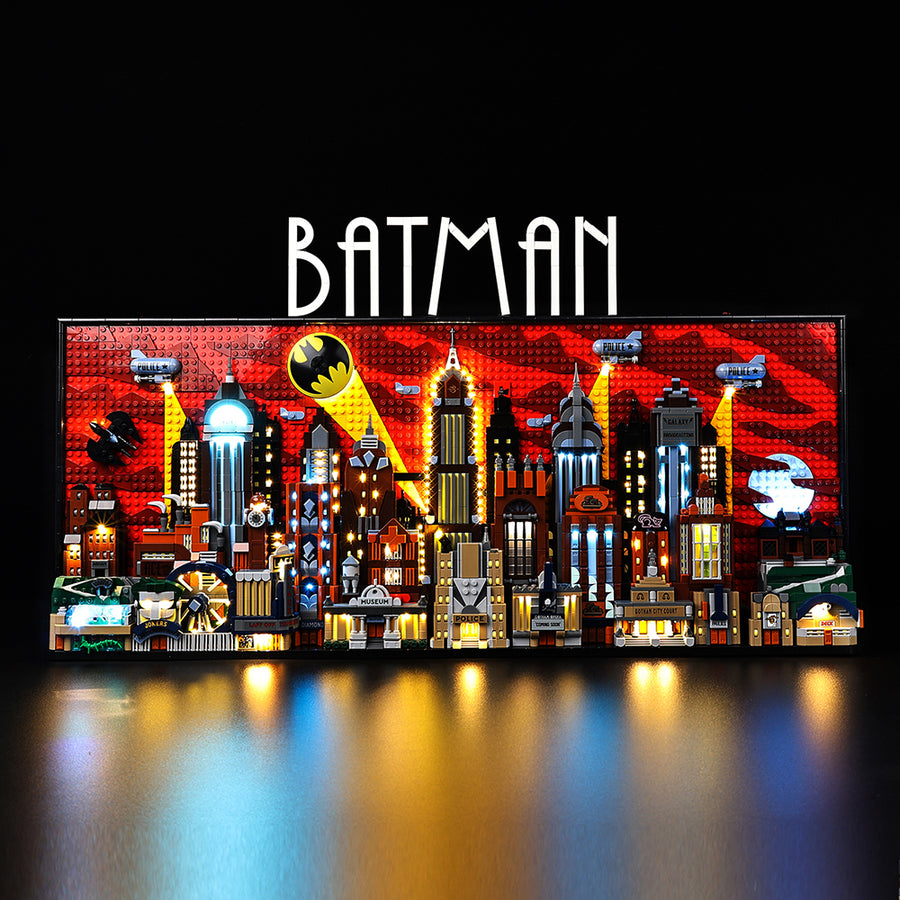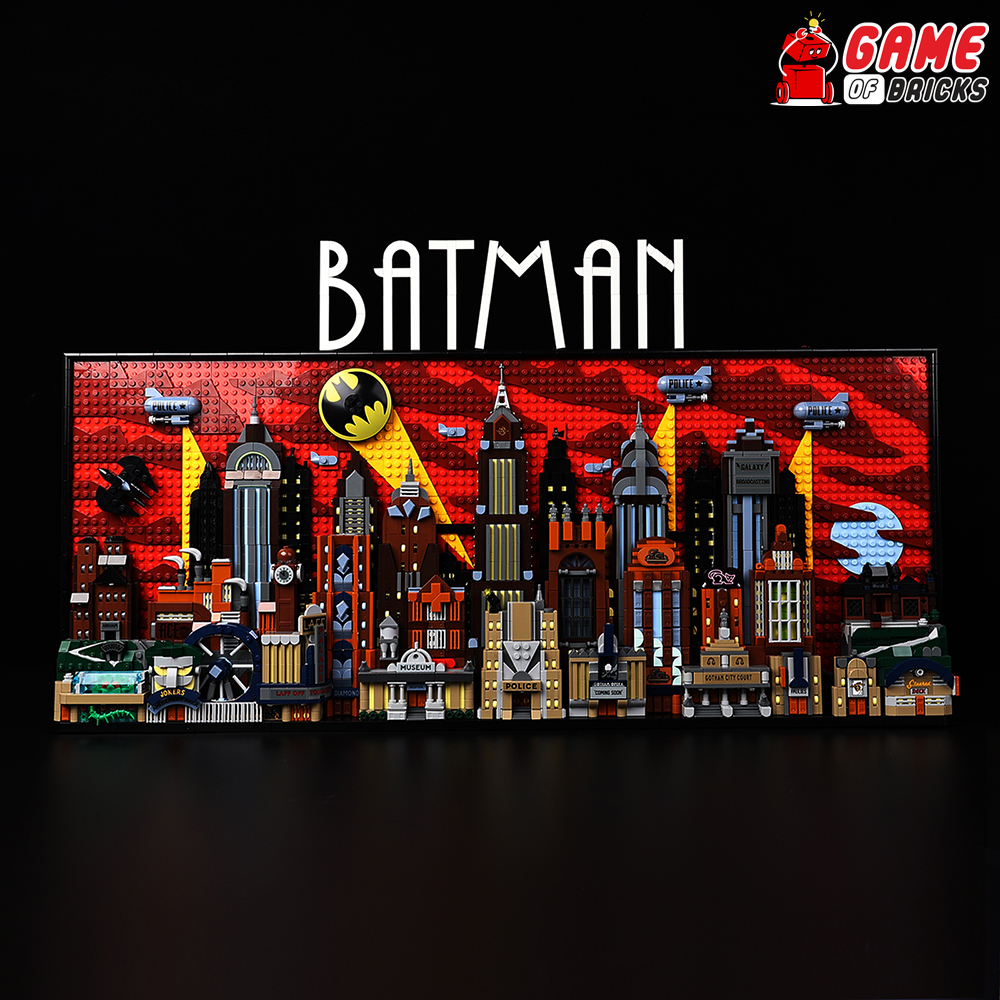Essential Light Kit Tips for First-Time LEGO® Users
Introduction
Imagine taking your LEGO® creations from impressive to absolutely mesmerizing. The transformative potential of adding lights to LEGO® sets is a game-changer in the world of brick-building. With just a few strategic placements of tiny bulbs, your LEGO® structures can come to life, glowing with charm and personality. For first-time users, the journey into the world of DIY LEGO® lights opens up a whole new dimension of creativity and excitement.
Embarking on the adventure of DIY LEGO® lights is not just about illuminating your builds; it’s about enhancing the storytelling, adding depth to your creations, and bringing a dynamic flair to each piece. Whether it's casting a warm glow through the windows of a LEGO® house or simulating the flashing lights of a bustling LEGO® cityscape, the possibilities are endless.
This article aims to guide first-time users through the captivating world of "diy LEGO® lights." We'll explore how these lights can dramatically enhance your LEGO® projects, turning them into stunning displays of art and engineering. From selecting the right lights to perfecting the installation process, these essential tips and tricks will equip you to illuminate your LEGO® masterpieces like never before. So, let's dive into the vibrant and exciting world of DIY LEGO® lighting and see how your creations can shine in a whole new light.
Section 1: Understanding DIY LEGO® Lights
Subsection 1.1: Basics of DIY LEGO® Lighting
DIY LEGO® lighting is an innovative way to bring your LEGO® creations to life through illumination. This concept involves integrating miniature lighting systems into LEGO® sets, a process that blends creativity with a touch of electrical know-how. Understanding the components and how they work together is key to successful lighting projects.
Components of DIY LEGO® Lights:
-
LED Lights: The most commonly used lighting elements, LEDs are favored for their small size, brightness, and energy efficiency. They come in various colors and sizes, suitable for different parts of LEGO® sets.

-
Wires and Connectors: Essential for transmitting power, these need to be thin and flexible to integrate seamlessly into LEGO® builds without affecting the aesthetics.

-
Power Source: This can range from battery packs to USB connections. The choice depends on the size of your project and the desired portability.

-
Control Units: For more advanced setups, control units like dimmers or programmable microcontrollers can be used to regulate light intensity or create dynamic lighting effects.

Installation Basics: Installing lights in LEGO® sets involves carefully placing LEDs in desired locations, routing wires between bricks, and connecting them to a power source. Attention to detail is crucial to ensure that the lighting enhances the build without disrupting the structural integrity or appearance of the LEGO® set.
Subsection 1.2: Benefits of Adding Lights to LEGO® Sets
Incorporating lights into LEGO® sets offers several aesthetic and functional benefits:
- Enhanced Visual Appeal: Lights add a new layer of depth and realism to LEGO® creations. They can highlight architectural features, create mood lighting, or bring scenes to life, making displays more captivating.
- Increased Play Value: For younger builders, lights can make playtime more engaging. Illuminated LEGO® sets become more interactive and enjoyable, sparking imagination and creativity.
- Display Enhancement: Lighted LEGO® sets stand out as display pieces, drawing attention and admiration. Whether in a living room or a collector’s showcase, illuminated builds are always a focal point.
- Educational Aspect: Building with LEGO® lights can be a fun and practical introduction to basic electronics. It’s an engaging way to learn about circuits, power sources, and electrical components.
Adding lights to LEGO® sets isn't just a cosmetic upgrade; it's a transformative process that enhances both the visual and experiential aspects of LEGO® building. It encourages builders to think creatively and technically, pushing the boundaries of what can be achieved with LEGO® bricks.
Section 2: Choosing the Right Lights
Subsection 2.1: Types of Lights and Their Uses
Selecting the appropriate type of lighting is crucial in bringing your LEGO® set to life. Each type of light offers unique effects and functionalities, suitable for various aspects of LEGO® building.
- LED Lights: Compact and versatile, LEDs are ideal for most LEGO® projects. They are available in various sizes, making them perfect for both small-scale details and larger illuminated areas.
- Use: Ideal for general illumination, highlighting figures, or creating focal points within a set.
- Strip Lights: These are flexible strips of LEDs. They provide a uniform and continuous light source and can be cut to size.
- Use: Great for creating ambient lighting, lining the edges of buildings, or illuminating pathways.
- Spotlights: These are small, focused lights that direct a beam of light onto a specific area.
- Use: Perfect for drawing attention to special features, such as the centerpiece of a set or architectural details.
- Flickering Lights: These LEDs mimic the flicker of a flame, adding a dynamic effect.
- Use: Suitable for creating fire-like effects, such as in a fireplace or torches.
- Fiber Optic Lights: Thin and flexible, these lights are excellent for intricate lighting scenarios.
-
Use: Ideal for starry sky effects or simulating tiny, detailed light points.

Subsection 2.2: Selecting Colors and Intensity
The color and intensity of your lights play a significant role in setting the mood and theme of your LEGO® set.
- Choosing Colors:
- Warm Colors (Reds, Oranges, Yellows): These create a cozy, inviting atmosphere. Suitable for homes, fire effects, or historical themes.
- Cool Colors (Blues, Greens, Whites): Ideal for futuristic themes, underwater scenes, or simulating moonlight.
- Multicolored Lights: Use these for festive or playful themes, such as a carnival or holiday decorations.
- Adjusting Intensity:
- Bright Lights: Best for highlighting key areas or when the set will be displayed in well-lit rooms.
- Dim Lights: Use dimmer lights for moodier, more atmospheric setups or to simulate nighttime in your LEGO® scene.
- Using Dimmers: Incorporating dimmers can give you control over the brightness, allowing you to adjust the lighting according to the desired effect or the time of day.
In choosing the right lights for your LEGO® set, consider the theme, the specific elements you want to highlight, and the overall atmosphere you aim to create. The correct combination of type, color, and intensity can dramatically enhance the visual appeal and emotional impact of your LEGO® creation.
Section 3: Planning and Designing Your Lighting Setup
Subsection 3.1: Designing Your Lighting Layout
Creating a lighting layout for your LEGO® set requires both creative vision and practical consideration. A well-planned layout not only ensures an aesthetically pleasing result but also simplifies the installation process.
- Visualize the End Goal: Before starting, have a clear idea of what you want to achieve with your lighting. Consider the mood, focus areas, and overall impact you desire.
- Identify Key Areas: Determine which parts of the set will benefit most from lighting. It could be the interiors of buildings, the streets, or specific LEGO® figures.
- Sketch Your Plan: Draw a rough sketch of your LEGO® set and mark where each light will go. This step helps in visualizing the final outcome and assists in organizing your installation process.
- Balance the Lighting: Ensure your lights are evenly distributed to avoid overly bright or dark spots. Think about how each light source will interact with others to create a harmonious look.
-
Consider Power Sources: Plan how you will power your lights. Battery packs offer flexibility, but you may need to conceal them within your set. Wired solutions may require closer proximity to an outlet.

Subsection 3.2: Installation Tips and Tricks
Once your lighting layout is planned, the next step is installation. Here are some tips to ensure a smooth process:
- Start with Difficult Areas: Install lights in hard-to-reach areas first, such as the interiors of buildings or under the baseplates.
- Route Wires Carefully: Plan how you will route the wires to keep your setup neat. Run wires behind LEGO® bricks and beneath baseplates wherever possible.
- Secure the Lights: Use LEGO-compatible clips or adhesive tape to secure lights in place. Ensure the lights are fixed firmly but not so tightly that they stress the wires or LEGO® pieces.
- Hide the Wires: Conceal wires as much as possible for a clean look. Tuck them into crevices, run them along the edges, or hide them under other elements.
- Test as You Go: Regularly test your lights during installation. This practice helps identify any connection issues or adjustments needed in real-time.
- Easy Access for Maintenance: Ensure your setup allows easy access to lights and batteries for future maintenance or changes.
- Flexibility for Future Modifications: Consider designing your lighting in a way that allows for easy modifications or additions in the future.
By carefully planning your lighting layout and following these installation tips, you can achieve a professional-looking and enchanting lighting setup for your LEGO® creation, enhancing its appeal and bringing your vision to life.
Section 4: Troubleshooting and Maintenance
Subsection 4.1: Common Challenges and Solutions
Even with careful planning and execution, first-time users of DIY LEGO® lights might encounter some common challenges. Here’s how to address them:
- Lights Not Turning On:
- Solution: Check all connections to ensure they’re secure. Verify that the power source is functioning and that batteries, if used, are fresh.
- Uneven Brightness:
- Solution: Adjust the placement of lights or add additional lights to areas that are too dim. Consider using a diffuser to spread the light more evenly.
- Visible Wires:
- Solution: Reroute wires to less visible areas or use LEGO® elements to cleverly conceal them. Color-matching wires to the LEGO® set can also help them blend in.
- Short Circuits or Flickering Lights:
- Solution: Ensure there’s no wire stripping that might cause short circuits. Check the connections for loose wires and secure them properly.
- Difficulty Integrating Lights into Complex Builds:
-
Solution: Plan your lighting in stages. Start with the most challenging parts first and gradually move to simpler areas.

Subsection 4.2: Maintaining Your LEGO® Lights
To ensure your LEGO® lights last long and continue to enhance your builds, proper maintenance is key:
- Regular Cleaning: Dust and debris can accumulate on your LEGO® sets and lights. Gently clean the lights with a soft, dry cloth to maintain brightness.
- Battery Care: If using battery-powered lights, remove the batteries if the set won’t be used for an extended period. This prevents battery leakage and damage to the lights.
- Avoid Overheating: Ensure that LED lights, especially those in enclosed spaces, have some ventilation to prevent overheating.
- Gentle Handling: When disassembling or reconfiguring your set, handle the lights and wires gently to avoid damage.
- Storage: If storing your lights, coil the wires loosely and keep them in a cool, dry place to prevent damage.
- Routine Checks: Periodically check your setup for any loose connections or dimming lights and address these issues promptly.
By understanding and addressing common challenges and adhering to maintenance best practices, you can ensure that your DIY LEGO® lights continue to function optimally, adding a touch of magic to your LEGO® creations for years to come.
Conclusion
Embarking on the journey of adding DIY LEGO® lights to your builds is an exciting venture that opens up a new realm of creativity and enjoyment. We’ve explored the essential aspects, from understanding the basics of DIY lighting and choosing the right lights, to planning your layout and tackling the installation process. Addressing common challenges and maintaining your LEGO® lights ensures that your creations continue to shine brightly, enhancing the visual appeal and interactive experience of your LEGO® projects.
Remember, the world of DIY LEGO® lights is not just about illumination; it's about bringing your imagination to life, adding depth and emotion to your builds. Whether you’re highlighting the architectural marvels of a LEGO® cityscape or creating a cozy glow in a LEGO® home, the addition of lights can transform your creations into captivating displays.
So, dive into the world of DIY LEGO® lighting with enthusiasm and confidence. Experiment with different lighting setups, play with colors and intensities, and don't be afraid to try new ideas. Your LEGO® creations are a canvas for your creativity, and with the addition of lights, the possibilities are truly endless. Let your LEGO® sets not only stand out in their construction but also in their ability to capture the imagination with their newfound light.

Call-to-Action (CTA)
We'd love to see the brilliant worlds you've created with your light-enhanced LEGO® sets! Share your radiant masterpieces on social media and in LEGO® enthusiast forums. Your innovative designs could inspire a whole community of builders. If you're looking for more ideas, delve into the vibrant world of DIY LEGO® lighting projects online. Join forums and groups where LEGO® enthusiasts gather to exchange tips, tricks, and inspiration. Your next lighting project could be the spark that ignites creativity in others!
Closing
Final Thoughts: Embracing DIY LEGO® lights is not just about adding brightness; it's about unlocking a universe of creative potential. Let these lights guide you to new heights in your LEGO® building journey, illuminating your imagination and bringing your most ambitious LEGO® visions to life.
1 comment
Top












Followed instructions as per the images, lights flickered on then nothing, remote circuit overheating. What can cause this?
Leave a comment